
Hohenfels 1978-79... ARTEP (page 2)
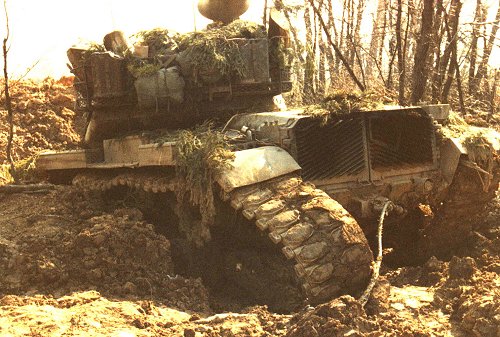
The 1978 ARTEP did not start out so well for B-26, or for B Co. 2/32 Armor. The reason was simple: the vehicles were just plain worn out. B-26 had heavily worn end connectors and yet we still had to take her to the field. It was buried in a prepared position (a glorified mud hole!) and when the crew tried to bring her out, the track broke. I was not present at the time.... having been declared an artillery casualty and evaced on a 113 ambulance. I got back to the vehicle two days later, to find THIS....... still stuck in the hole!
This shot does show some interesting items. First, the tow cable attached to the tow pintle on the back of the tank. Next, note the wooden chauk blocks in the bustle rack, used to help secure the tank when rail loaded. Also, if one looks carefully above the left rear fender, they can see a C-Ration can by the manufacture's lift.
Journal entry, May 8, 1978: "...mechanical problems-- by the morning of our seizure of the objective, B Co. had 8 tanks of 16-- one pack burning fuel; one tank with a blown final drive; one tank with a wrecked idler wheel; four tanks with thrown tracks; and one with a broken track."
This only underscores how worn out the vehilces were by the late 1970s.
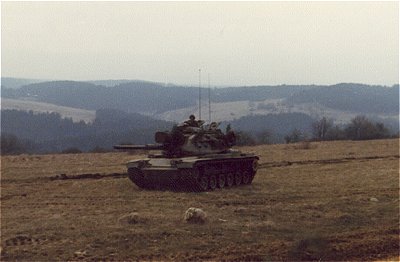
Tank crews must be careful not to crest hills and ridges, since their silhouette will stand out clearly, making themselves an easy target. If you have ever gone hunting, and seen a deer on a ridgeline, you will understand! One must also take care not to present a long-range target. Standard engagement ranges in Germany are typically no more than 1,200 meters, which is about the range from this tank to the hills beyond.
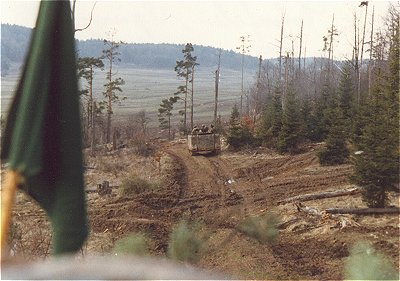
The Irish Rangers in action, moving out in a CSC M-113 carrier. Close infantry support and combined arms is necessary for success on any battlefield, and even moreso on the modern mechanized battlefield.
The generally chewed up nature of the Hohenfels training area can be seen here.
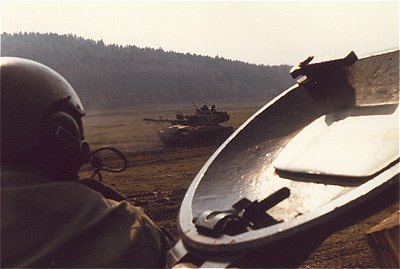
"We never retreat. We only move in retrograde." This may be true, but all units move forward.... and backward.... in combat. To fall back is often necessary to take the sting from a heavy enemy attack. Here, SSG Clinton looks beyond his hatch as an element of B Co 2/32 performs a withdrawal to new positions.
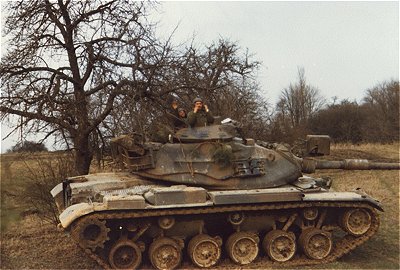
Teamwork is essential for success, and it is crucial that tanks work together to defeat an enemy by which they are heavily outnumbered. In some situations it was expected to be facing 5 to 1, or even 8 to 1, odds during the initial Soviet assault. It has been also pointed out by some that the period from 1977 to 79 were the most likely times when the Soviets would have attacked in western Europe.
SSG Ortega's tank overwatches as other tanks pass by on the attack.

